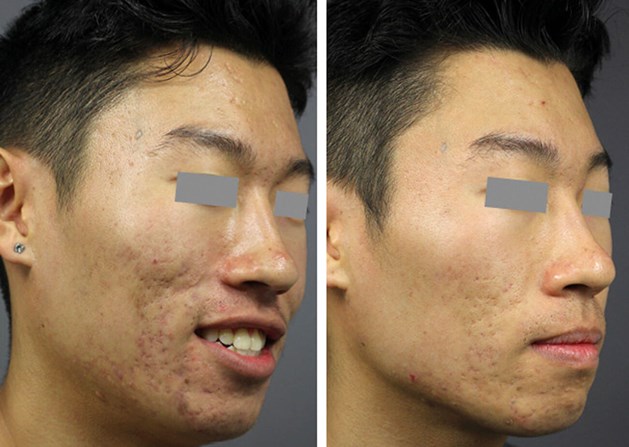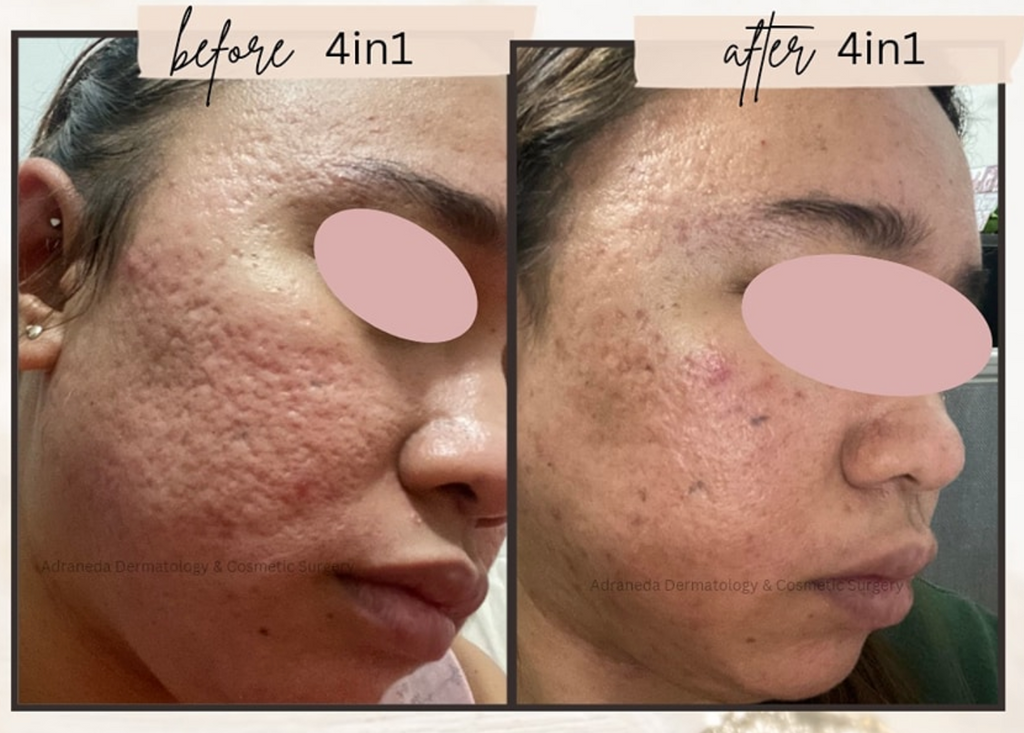Advanced Acne and Acne Scars Treatment: Say Goodbye to Blemishes
Advanced Acne and Acne Scars Treatment: Say Goodbye to Blemishes
Blog Article
Comprehending the Different Skin Disease and Efficient Therapy Alternatives for Acne Marks
Acne marks represent a complex interaction of skin conditions that dramatically effect individuals' self-worth and general skin health. As we discover the landscape of acne scar monitoring, it ends up being evident that the trip toward more clear skin may include more than simply topical solutions.
Kinds Of Acne Scars
The two main groups of acne scars are atrophic and hypertrophic marks. These marks are further categorized right into three subtypes: ice pick marks, which are deep and slim; boxcar scars, which are broader and have distinct sides; and rolling marks, which create a wave-like appearance due to unequal skin appearance.
In contrast, hypertrophic scars arise from an overflow of collagen throughout the healing process, causing elevated locations on the skin. These marks are typically solid and can vary in shade, often appearing red or darker than the bordering skin.

Reasons of Acne Scarring
Scarring occurs as an outcome of the body's all-natural healing response to inflammation and injury triggered by acne sores. When acne types, it sets off an inflammatory response, bring about the launch of various cytokines and development aspects that promote recovery. This procedure can sometimes lead to too much tissue development or insufficient repair, resulting in marks.
The primary root causes of acne scarring include the extent of the acne itself, duration of the sores, and individual skin kinds. Severe inflammatory acne, such as blemishes and cysts, is a lot more likely to lead to scarring due to deeper cells damage. In addition, improper handling of acne lesions, such as pressing or choosing, can aggravate tissue injury and swelling, increasing the probability of scarring.
Hereditary predisposition likewise plays a substantial role; individuals with a family members history of scarring go to a greater risk. Moreover, skin type and color can influence mark development, as darker complexion may experience post-inflammatory hyperpigmentation, while lighter skin might develop atrophic marks.

Treatment Choices for Scarring
Reliable therapy alternatives for acne scarring differ relying on the kind and extent of the marks. Normally classified into atrophic, hypertrophic, and keloid scars, these conditions require tailored methods for optimal results.
For atrophic marks, which are identified by a loss of cells, therapies such as chemical peels, microdermabrasion, and laser therapy are typically employed. These methods advertise skin revival and promote collagen production, thus improving skin appearance. Subcision, a minimally intrusive treatment, can also be effective by separating coarse bands underneath the skin.
Hypertrophic and keloid scars can reference be extra testing to treat. Choices consist of corticosteroid injections to decrease swelling and squash the marks. skin rejuvenation treatments. In some instances, cryotherapy or laser treatment may be advised to minimize their look
Surgical choices are available for extreme scarring, where excision or skin grafting may be necessary. It's crucial for individuals to seek advice from a skin doctor to evaluate their specific mark type and review the most ideal treatment strategy. Integrating multiple therapies often generates the very best end results, guaranteeing that each patient's special skin disease is addressed effectively.
Natural Home Remedy and Natural Solutions
All-natural services and home solutions can give an obtainable method for people looking for to improve the appearance of acne marks. Various components found in the home kitchen have actually demonstrated prospective advantages in boosting skin texture and promoting healing.
Applying fresh aloe vera gel directly onto the scars can help improve skin hydration and lower soreness. Honey has all-natural antibacterial and moisturizing qualities that can assist in scar recovery.
Another reliable alternative is lemon juice, which serves as a natural exfoliant and can lighten hyperpigmentation. However, it needs to be used cautiously, as it might create photosensitivity. Oatmeal masks are additionally valuable; their gentle exfoliation can assist get rid of dead skin cells while comforting irritation.
Crucial oils, such as tea tree oil and lavender oil, can further support mark recovery because of their antimicrobial residential properties. It is important to perform a patch test prior to using any solution to make sure there are no damaging responses. These natural services can be a complementary strategy in the trip to reduce acne scars.
Preventing Future Scarring
Taking on a positive method to skin care can dramatically minimize the risk of creating future acne scars. Among the key approaches is to handle acne effectively as it arises (acne and acne scars treatment). This entails making use of non-comedogenic skincare items and medicines prescribed by skin specialists that target acne without irritating the skin. Normal cleansing, peeling, and hydration can help keep skin health and protect against blocked over at this website pores.
Additionally, staying clear of the lure to squeeze or choose acne sores is crucial, as this can lead to inflammation and succeeding scarring. Rather, people need to concentrate on using topical therapies that promote healing and decrease swelling. Active ingredients such as salicylic acid, benzoyl peroxide, and retinoids are known for their effectiveness in taking care of acne and lessening marks.

Lastly, preserving a healthy and balanced diet abundant in antioxidants and staying hydrated assistances skin regrowth. By implementing these safety nets, people can dramatically lower their risk of future scarring and promote general skin health and wellness.
Verdict
Finally, a detailed understanding of acne scars, including both atrophic and hypertrophic types, is vital for reliable therapy approaches. Customized treatments, consisting of professional treatments and natural remedy, can dramatically boost skin appearance and structure. Safety nets likewise play a crucial role in minimizing future scarring. Consultation with a dermatologist remains important to develop customized methods that consider specific skin kinds and mark seriousness, ultimately enhancing the efficiency of mark administration methods.
Acne scars stand for a complex interaction of skin conditions that significantly effect people' self-esteem and general skin health. The 2 primary groups of acne scars are atrophic and hypertrophic marks. These scars are more classified right into three subtypes: ice pick marks, which are deep and narrow; boxcar scars, which are broader and have distinct edges; and rolling marks, which produce a wave-like appearance due to irregular skin texture.
A thorough examination with a skin doctor can assist establish the most appropriate intervention, taking right into account the individual's skin type, mark extent, and overall skin health and wellness.
Consultation with a skin doctor remains critical to develop individualized strategies that consider private skin kinds and mark severity, ultimately improving the effectiveness of mark monitoring techniques.
Report this page